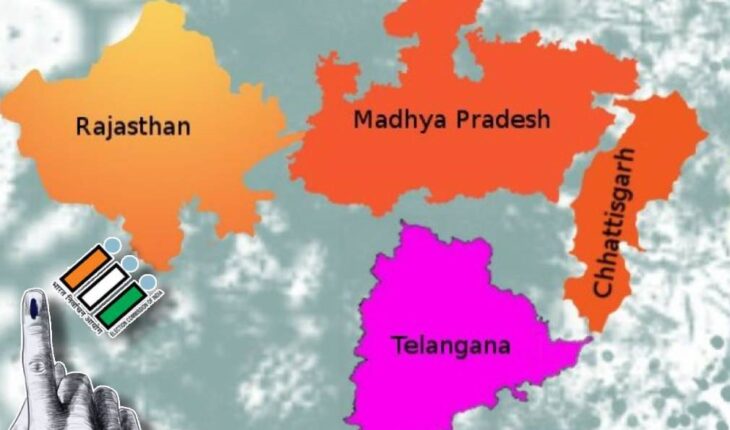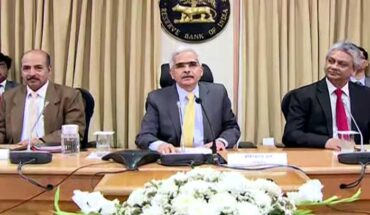
These days, in some states of India, elections are looming, and there is a lot of buzz about populist and social welfare schemes in all these states. Is this a political strategy of the present state governments? Is this not impacting the economic development of the states? Many such questions are being discussed continuously these days. Under the democratic system, the government’s main responsibility is not only to lead society towards economic prosperity, but at the same time, there is also the need for the economic well-being of the deprived section from the mainstream. It’s a dilemma where drawing the right line is a very complex task because economic prosperity and social welfare are just contrasting. The notion that we can achieve 100% economic prosperity is an idealistic perspective. Therefore, within the democratic system, a responsible approach can only be exercised with the mindset that the economically backward and poor section always receive priority in economic policies.
By the end of this year, there will be elections in four major states of the country: Rajasthan, Madhya Pradesh, Chhattisgarh, and Telangana.
These four states are crucial to the country’s economic development just as much as they are in terms of geographical and social structure. However, comparing them on various economic indicators, such as the fiscal deficit, it’s evident that they cannot be measured on the same scale. .For instance, Rajasthan and Madhya Pradesh show a significant fiscal deficit, estimated at 4%, surpassing the 3% limit set by the Finance Commission for the current fiscal year. On the other hand, Chhattisgarh has an estimated 3% deficit, and Telangana has an estimated 2.7% deficit, indicating a better economic situation. It’s crucial to note that fiscal deficit is a complex aspect of the economic situation, and comparative analysis reveals multiple facets. While the fiscal deficit of Rajasthan and Madhya Pradesh may be similar, Madhya Pradesh is relatively in a better position. Similarly, although Telangana has the lowest fiscal deficit among the four states, it doesn’t necessarily imply it has the best economic conditions.
The ideal situation for the economic development of any state can be primarily understood through three aspects: firstly, the ratio of state’s capital expenditure to total expenditure; secondly, the actual implementation of budgeted capital expenditure; and thirdly, the ratio of committed expenditures in revenue spending. It should be noted that committed expenditures refer to expenses such as salaries, pensions, and interest payment.Based on these factors, despite Rajasthan and Madhya Pradesh having similar financial deficits, the difference lies in the fact that Madhya Pradesh is burdened with financial debt due to the purposeful increase in capital expenditure, leading to significant interest payments. In contrast, Rajasthan’s proportion of committed expenditures in revenue spending is much higher. According to the data, Rajasthan’s expenditure on capital is only 8% and, therefore, it ranks the lowest among all states. Additionally, only 50% of the budgeted capital expenditure has been effectively implemented, posing a significant challenge to the state’s economic prosperity.In Madhya Pradesh, capital expenditure stands at 18%, and 97% of the budgeted capital expenditure is consistently being utilized annually. Telangana, established just a decade ago, has a capital expenditure of 10% and manages to implement 60% of its budgeted expenses. Chhattisgarh’s capital expenditure accounts for 14% of total expenditure, with 76% of the estimated figures being effectively utilized. It is noteworthy that if a state government aims to increase its capital expenditure, it undoubtedly reflects in economic policies, as these expenditures lead to the creation of new jobs, inflation control, and the development of essential infrastructure. This, in turn, attracts new businesses and private investments more effectively. Moreover, these expenditures also assist the state in generating various sources of new revenue in the future, promoting growth in both productivity and skills.
It is important to mention here that the more the revenue expenditure is divided as committed expenditure, the greater the opportunities for the fiscal deficit to increase, requiring financial loans for capital expenditure. According to these expenses, when comparing the four states, Rajasthan is once again at the top. Based on the figures from the last three years, these expenses in Rajasthan account for 60% of revenue expenditures, with pension expenses exceeding 10%. Meanwhile, in Madhya Pradesh, it is 45%; in Chhattisgarh, 43%; and in Telangana, 38%. These figures clearly indicate a significant difference in interest payments among these states over the past few years. Chhattisgarh has the smallest share, where the average rate of financial interest payment is 7% of the revenue income. It is 9.75% in Madhya Pradesh and 12.3% in Telangana. Rajasthan has the highest interest payment, with an average rate of over 14%. In this regard, the 14th Finance Commission has set a limit for interest payments, up to 10% of revenue income, and payments beyond that are not considered rational given the economic condition of the state.
The focus on economic policies emphasizing capital expenditure can propel any state toward economic prosperity. Therefore, it is crucial to continually increase the proportion of capital expenditure and implement approximately 90 percent of the budgeted expenditure in reality. Conversely, a significant portion of revenue allocated to salaries and pensions in expenditure will undeniably escalate the revenue deficit. Hence, it is essential to keep it below 50%. Otherwise, the state will struggle to prosper and work towards its social welfare goals, ultimately leading to a poor and backward state.
Dr P S Vohra is Writer, columnist and financial thinker, View are personal






